

Table of contents
- One-time costs
- pond structure
- Technology
- koi
- Pond planning and creation by a specialist
- Running costs of the koi pond
- water change
- electricity costs
- lining
- veterinary costs
- Conclusion
Of course, the size of the pond and what material it is made of are also decisive. The size of the pond system not only determines the acquisition costs, but also the maintenance costs. The technology occupies a large position, the entire filter system and everything that goes with it. Of course, the overall design of the pond system and border is also important. The fish are usually not cheap either. So it all comes together.
One-time costs
The one-off costs refer to the construction of the pond, starting with the planning (if you hire a professional entrusted), the digging of the pit, the creation of the pond and the installation of the entire technology, up to the purchase of the koi These costs are quite high, depending on how much can be done yourself and how much professionals you have to pay. For beginners who don't know their way around very well and don't have any connections, purchasing the technology can help become expensive, depending on whether you get a reputable seller or someone who only really skims off once would like. There are big differences. In order to find out, it is worth reading up on the topic of koi and their needs.
pond structure
A koi pond should hold at least 5,000 liters of water, 10,000 would be better. Koi don't like to be alone, which is why you should get a larger group, at least 5 animals, better more. Koi grow vigorously, this must be taken into account. The pond should be at least 1.80 m deep so that a temperature of around 4°C is reached even in winter. One calculates with 1,000 liters of water per koi, but 3,000 is better. The volume determines the water quality, the water temperature, the maintenance and energy costs, the construction costs and the maintenance costs. When it comes to construction, what matters is what you can do yourself and what needs to be done by specialist companies. Even excavation can be a problem, as can the question of where to put the excavation. Are machines (excavators) required and a truck for removing the earth? With large ponds, a lot comes together. Even if the floor has to be smoothed, there are costs involved. If steep parts of the bank are fixed with cement or the subsoil because of too many stones, this costs extra. You can lay the pond liner yourself or have it laid. This is particularly advisable if it has to be welded on site.
- Prefabricated pond basin made of GRP - 11,000 liters for around 2,500 euros
- Foil pond - has a decisive disadvantage, due to the creases that occur when laying, it cannot be cleaned sufficiently. Germs that often lead to diseases settle in the folds. The foil should be at least 1 mm thick, preferably 1.2 or 1.5 mm
- 1mm thick PVC foil – from 3.50 euros per m²
- 1 mm thick PE film - from a good 4 euros (4.20) per m²
- 1mm thick EPDM foil - from 7 euros per m²
- Protective fleece – around 1.5 euros per m²
- Individually designed GRP pond - you need at least 3 layers of GRP mats (450g/m²) - one kg of polyester resin + 1 m² of this fiberglass mat costs from a good 10 euros
- Removal of earth - 7 cbm container - about 100 euros
- Concrete pond, reinforced with at least one layer of GRP - often the most expensive option if you cannot build the walls yourself - prices depend on the stones used, the cbm concrete costs approx. 100 euros, plus screed mats for stability and, of course, polyester resin and GRP mats
Overall, the construction of the pond is usually the most expensive part of keeping koi. But you should do it right the first time, so you save yourself repairs and conversions. Both are usually more expensive.
Technology
Koi are much more demanding to keep than normal garden pond fish. Nothing works without the right technology. As a layman, you should definitely have this planning done by a specialist. All drainage and filtration systems are important and should work, including floor drain and side drains. There are big price differences between the pumps. Cheap pumps don't have to be bad in general, but experience shows that they usually fail much earlier than branded products. If you buy cheap three times, you can also approve one more expensive one. The pond volume should be completely turned over at least once every two hours. This is the most important criterion when buying a pump. However, an hourly circulation is even better for the health of the koi.
- One, better two pumps with a real pump capacity of approx. 10,000 liters per hour and the lowest possible power consumption - around 300 euros
- Surface skimmer to keep the water surface clean - from about 80 euros
- Filter that ensures clear water mechanically and biologically – from 200 euros
- Piping system - depends on pond size
- UVC device - 4 W UVC - output per m³ of pond water - from 150 euros
- Additional membrane pump for oxygen (from 1,000 l/h) - from 50 euros
- Pond heating – from 150 euros
- Photometer - for water control - good devices from 300 euros, usually more
koi

There are extreme differences in the koi themselves. You can buy one for 1 euro, but also for 500,000 euros. Real Japanese koi are significantly more expensive than those from European offspring. Laypersons hardly recognize any difference and many pond owners get along well with the animals if they only cost 10 euros. Hardly anyone really knows the prices. They're great for beginners. If you get addicted and have enough experience, you can try more expensive fish. Before you invest thousands of euros, think about how you can spoil the fishing for the voracious herons. They have already fished whole ponds empty.
Pond planning and creation by a specialist
Anyone who hires a specialist company to plan and build a koi pond and entrusts them with all the work must reckon with 500 to 1,000 euros per 1,000 liters of water volume. A lot comes together, although it always depends on the circumstances and of course on the wishes of the client. If you can do a lot of the work yourself and hardly or not at all need to pay for the help of experts, 5,000 euros for the construction of the pond is a realistic sum. However, it will be a rather small and uncomplicated koi pond, more something for beginners, with a capacity of 10,000 to 12,000 liters. If you need help, you should calculate with twice the amount, even if you build larger, you have to plan significantly more. Most koi ponds have a capacity of around 30,000 liters.
Running costs of the koi pond
The running costs of the koi pond should not be underestimated. All sorts of things come together every month. However, the costs cannot be given as a flat rate, they depend on the pump and filter, the stocking density, whether you want to maintain a minimum temperature of 15°C all year round and some others factors.
water change
A 10 percent water change should be done every week. With 11,000 liters, that's a good 1,1000 liters a week, 4,400 liters a month and around 50 cbm a year. Depending on the price of the water, that amounts to a good 100 euros. Sewage also has to be paid for, unless you're lucky enough to get free. To do this, the water in the garden must seep away. It should be remembered that an 11,000 liter pond is a very small koi pond.
electricity costs
Depending on the technology, the electricity costs are between 30 and 100 euros per month. Large ponds usually contain a lot of technology, i.e. several pumps, skimmers, etc. and that costs. If you heat additionally, you have to reckon with more. Small ponds are the cheapest to maintain. Unfortunately, there are often problems with the health of the carp. Then the vet costs go up.
lining
When it comes to food, of course it depends on how many Koi are present and how big they are. There are also pure eating machines. Real enthusiasts only feed expensive branded food, but many koi owners can also get along with cheaper food. High-quality ingredients are important and they have their price. For the 11,000 liter pond with 10 koi you have to calculate between 10 and 40 euros per month, with a fish size of 30 to 40 cm. It is also more expensive, but the upper limits are open anyway, at least for Koi. Anyone who spends 1,000 euros or more on such a fish is only feeding the best food, after all, the animal should be doing well. You have to experiment a bit with the food until you have found the optimum for your Koi.
veterinary costs
Veterinary costs are difficult to calculate. It depends on how many fish are affected and what diseases they have. A visit to the vet rarely costs less than 300 euros, at least that's what you find out in numerous forums. The best thing to do is put 100 euros aside every month and save up a bit, then you're on the safe side.
Conclusion
Building a koi pond is not easy and, above all, not cheap. However, it always depends on what exactly is planned and how much of it can be done yourself. It is possible to build a koi pond for 5,000 euros, but it will be rather small and kept very simple. Experts who help you cost a lot of money. You can double or even triple the price of a pond construction, depending on the plan. It will be the most expensive for koi lovers who are not technically skilled and have no contacts whatsoever. If you have everything done by an external service, you rarely get by for less than a five-digit amount. Experienced koi keepers say they spend an average of $100 on their pond, not counting vet bills and fish purchases. New purchases of technology and pond design are also excluded. For very large ponds with a fish stock of 30 to 40 animals, you have to calculate significantly more. The food alone costs so much. A koi pond is an expensive hobby and not for people who have to be quite careful with their finances. The construction of a pond needs to be well thought out and I want to warn you here. Those who are infected with koi fever quickly don't care about the costs. You can't get away from it. After all, many hobbies cost a lot of money and this one is particularly nice.
 garden editorial
garden editorial I write about everything that interests me in my garden.
Learn more about creating a pond
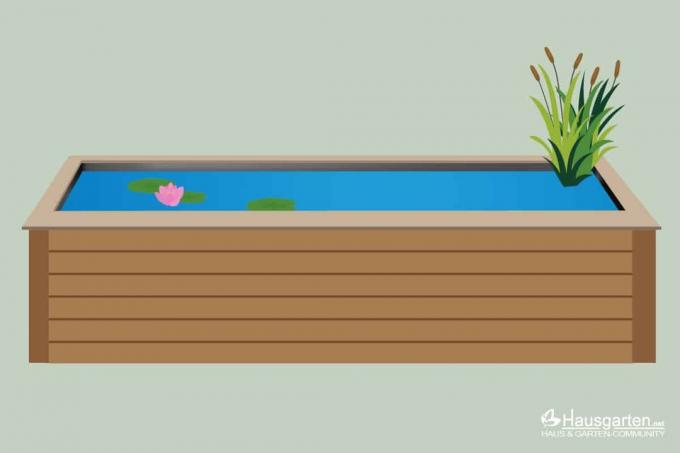
Build a high pond yourself: 15 tips for creating it yourself
A laborious excavation can be avoided with a raised pond. If you want to build and create it yourself, you should pay attention to numerous details. With the right tips, the project runs smoothly and long-term joy is guaranteed.

Build a duck coop yourself 7 tips for a duck house
Building a duck coop yourself is essential if you want to keep ducks yourself. But a protective shelter is also a practical and valuable aid for wild ducks. With our tips for building a duck house yourself, it's easy.
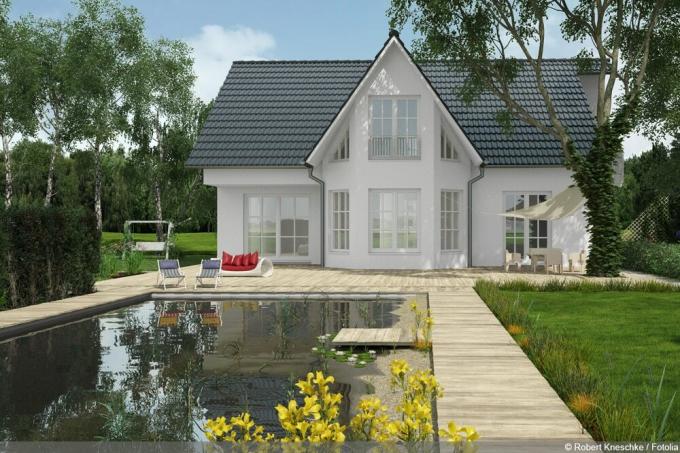
Make a swimming pond out of a garden pond: rebuild in 8 steps
Gardeners with manual skills transform the pond into a natural swimming paradise for the whole family. Thanks to the living sewage treatment plant, the private water world works in an exemplary manner without chemicals. This guide explains how to convert your garden pond into a swimming pond in 8 steps.
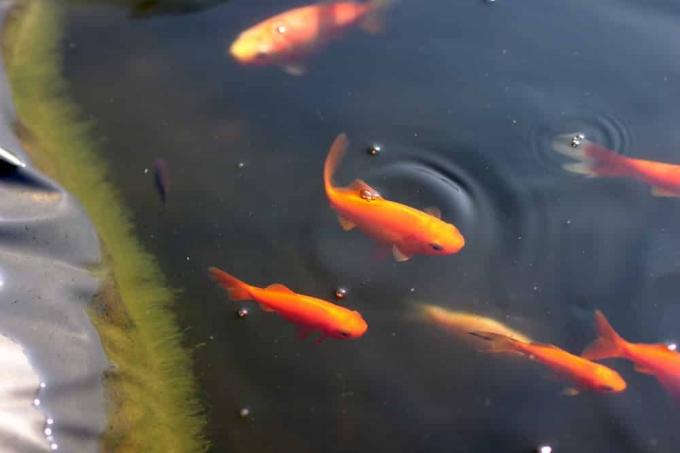
Fasten the edge of the pond: this is how the pond liner gets hold on the pond bank
Filled with water, maybe a few fish in it and attractively planted, a pond is a small piece of paradise in your garden. In order for this to remain so for a long time, the correct attachment of the edge and the pond liner is crucial.
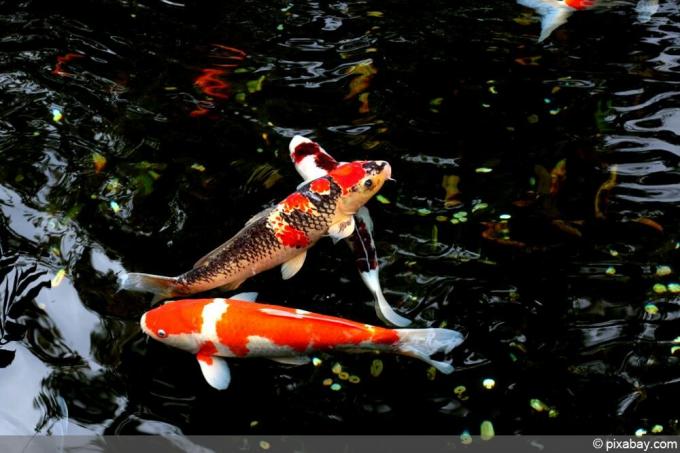
Creating a koi pond: requirements for size and filter system + costs
Kois are not only particularly noble, but also very demanding fish. Because the animals have certain requirements for their habitat, which must be taken into account when creating the koi pond.
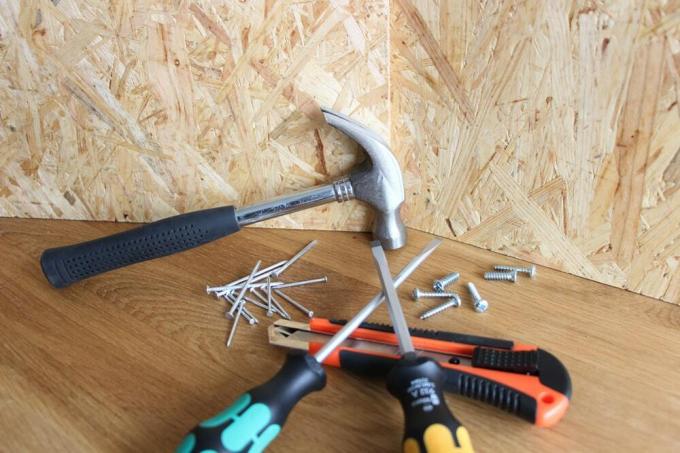
Build your own indoor pond – instructions in 10 steps
There are big differences in indoor ponds. A lot is possible, starting with plastic shells, such as those used in the garden, through brick and tiled ponds similar to a bathtub, to liner ponds in a wooden frame. Anyone who has never dealt with indoor ponds will be amazed at what some people come up with. Of course, the vessels can also be used for rooms, which are referred to as mini ponds or balcony ponds.
